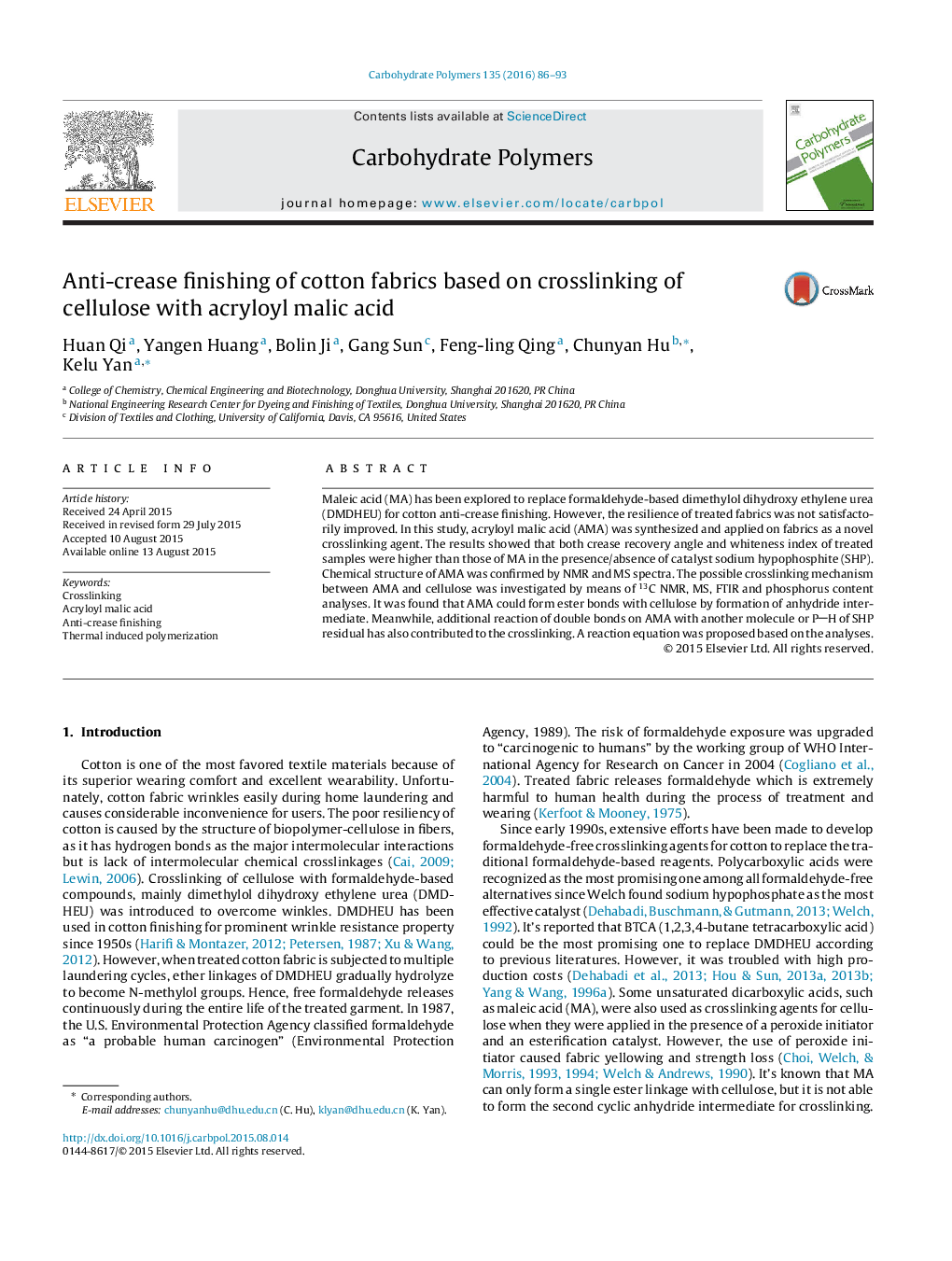| کد مقاله | کد نشریه | سال انتشار | مقاله انگلیسی | نسخه تمام متن |
|---|---|---|---|---|
| 1383548 | 1500623 | 2016 | 8 صفحه PDF | دانلود رایگان |
• Acryloyl malic acid was synthesized and applied as a novel crosslinking agent.
• AMA showed higher reactivity than MA in the presence/absence of catalyst (NaH2PO2).
• The possible reaction mechanism of AMA was analyzed and investigated.
• The thermal induced polymerization has contributed the crosslinking reaction.
• A chemical reaction equation was proposed based on the measurements and analyses.
Maleic acid (MA) has been explored to replace formaldehyde-based dimethylol dihydroxy ethylene urea (DMDHEU) for cotton anti-crease finishing. However, the resilience of treated fabrics was not satisfactorily improved. In this study, acryloyl malic acid (AMA) was synthesized and applied on fabrics as a novel crosslinking agent. The results showed that both crease recovery angle and whiteness index of treated samples were higher than those of MA in the presence/absence of catalyst sodium hypophosphite (SHP). Chemical structure of AMA was confirmed by NMR and MS spectra. The possible crosslinking mechanism between AMA and cellulose was investigated by means of 13C NMR, MS, FTIR and phosphorus content analyses. It was found that AMA could form ester bonds with cellulose by formation of anhydride intermediate. Meanwhile, additional reaction of double bonds on AMA with another molecule or PH of SHP residual has also contributed to the crosslinking. A reaction equation was proposed based on the analyses.
Journal: Carbohydrate Polymers - Volume 135, 1 January 2016, Pages 86–93
